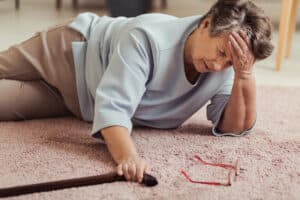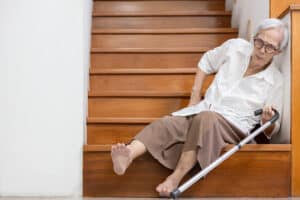Falls, especially among the elderly, are a pressing concern. From an elderly person falling out of bed to a seemingly simple trip over an uneven surface, there are many risks, and the consequences can be vital. The reasons for these falls can vary, ranging from physical changes linked to ageing to environmental factors. This article will delve into fall prevention for elderly, shedding light on why seniors fall and how to mitigate these risks.
Why Do Seniors Fall?
Understanding why seniors fall is the first step towards effective prevention. The causes of falls in the elderly are diverse:
Physical changes: As we age, muscle strength diminishes, and balance can be compromised, increasing the chances of an elderly person falling.
Medications: Some drugs can cause dizziness or dehydration, increasing fall risk factors in elderly individuals.
Vision issues: Age-related vision problems can cause elderly people to fall due to not spotting hazards and objects in the house.
Chronic conditions: Diseases like arthritis or dementia can make falls in older adults more common.
Elderly Falling Out of Bed and Other Common Scenarios
One common and alarming scenario is the elderly falling out of bed. The bed, typically a place of rest and safety, can become a hazard if precautions aren’t taken. Similarly, scenarios like an old lady falling over or an old man falling over while trying to pick something up, or elderly falling backwards when attempting to sit can be distressing.
Fall Prevention for Seniors: Strategies and Equipment
Effective fall prevention for the elderly requires a specific approach; adapting the environment and fortifying the individual.
Environmental Modifications
Use fall prevention equipment for the elderly like handrails, non-slip mats, and adequate lighting. Placing fall mats for the elderly, around beds or hazardous areas can reduce the impact if a fall does occur..
Personal Interventions
Physical therapy can address why you keep falling over, improving balance and strength.
Reviewing medications and understanding the side effects can help in management of falls in the elderly. Plus regular eye tests can reduce the instances of an old woman falling over due to sight issues.
Preventing Stair-Related Falls with Home Lifts
A particularly concerning scenario for many families is the thought of an elderly loved one falling down the stairs. Stairs can be a challenging obstacle for seniors, with factors like reduced balance, vision issues, and muscle weakness amplifying the risk of a fall. For many, navigating stairs becomes not just an inconvenience but a genuine safety concern. In these cases, homelifts can be a game-changer.
Domestic lifts offer a safe and comfortable alternative to stairs, ensuring that seniors can move between floors with ease and security. Multicare provides a range of high-quality domestic lifts tailored to individual needs. If you’re considering a solution to stair-related risks or just need advice on creating a safer home environment, contacting Multicare for their expertise on homelifts is a smart move. Their dedication to fall prevention for the elderly ensures that seniors can maintain their independence while prioritising safety.
Overcoming Fear of Falling in Elderly
After experiencing a fall, it’s common to have a fear of it happening again. This fear can be debilitating, making individuals more prone to falls. Overcoming fear of falling in elderly individuals is crucial for their physical and mental well-being. Encourage them to talk about their fears, and consider counselling or therapy.
Fall Prevention: A Holistic Approach
When it comes to falls and the elderly, prevention is paramount. Here are some general guidelines:
Education: Knowing the causes of falls in middle age and beyond can be empowering. Awareness leads to proactive measures.
Engage in Regular Exercise: Activities like Tai Chi or yoga can improve balance, reducing the chances of elderly falling down.
Stay Connected: Regular check-ins with healthcare providers can ensure that an individual’s risk is continually assessed and mitigated.
Conclusion
Prevention of falls is a topic that cannot be ignored. Whether it’s preventing falls in elderly persons or helping someone who’s wondering, “Why do I keep falling down?”, a proactive approach is key. By understanding the causes of falls in the elderly, implementing fall prevention strategies, and utilising falls prevention equipment for the elderly, we can create safer environments for our seniors. It’s our responsibility to ensure that scenarios of an old lady falling over or any elderly individual facing similar risks are drastically reduced, allowing them to lead safe, dignified lives.



